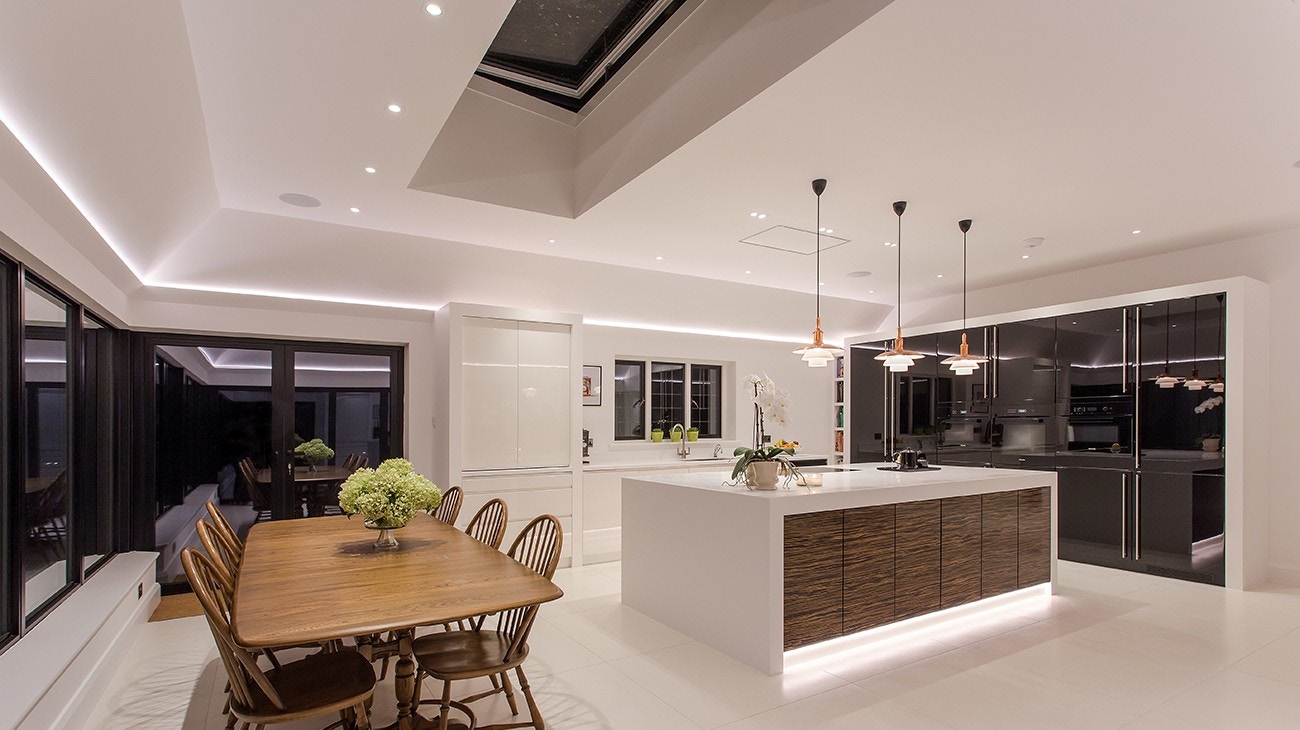How else does the circadian rhythm affect us?
While the quality of our sleep is the most obvious impact, circadian rhythms play a vital role in many other aspects of our body.
Research shows that changes in the circadian clock are associated with temporal changes in feeding behaviour and increased weight gain.
Circadian rhythms are known to influence our mental wellbeing too. This includes the risk of psychiatric illnesses like bipolar disorder and depression, as well as neurogenerative diseases such as dementia.
Given our sleep, physical health, and mental wellbeing are at stake, the importance of controlling your circadian rhythm should be apparent. But how exactly can we help promote a stable circadian cycle for a healthier lifestyle all-round?
This is where lighting design comes into play.
How does lighting affect our circadian rhythm?
Although circadian rhythms are controlled by the suprachiasmatic nucleus (SCN) – the ‘master’ clock in the brain we mentioned - environmental factors have a major impact on them too.
For instance, your eyes detect when it’s dark, and then send this information to your brain. In response, the SCN then passes a signal to your pineal gland to produce more melatonin. This hormone usually peaks at night, and then decreases quickly after you wake in the morning.
And so, lack of light is a primary cue that signals the body it’s time to sleep. If you are exposed to bright, artificial lighting at night, the SCN won’t produce enough melatonin for you, making it difficult to sleep. This affects both getting to sleep, and how we you sleep during the night.
Comparably, if you aren’t exposed to enough bright light (natural and artificial) during the day, you’ll likely feel tired and sluggish due to excess amounts of melatonin in your system.
Therefore, the lighting in your home, workplace, and everything in between must be well thought through and optimised with circadian rhythms in mind.
This involves the use of lighting controls to help set brightness levels, as well as the consideration of lighting temperatures and maximising the volume of natural light in any given space.
All in all, when it comes to our physical and mental wellbeing as humans, lighting design cannot be overlooked.
Circadian lighting design from Hampshire Light
At Hampshire Light, we have over 20 years’ experience providing thoughtful, practical, and award-wining lighting design for our clients’ projects. With our complete end-to-end consultative process, expertise in control systems, and passion for creative and technical excellence, we are the number one choice for leading professionals and homeowners in Hampshire and surrounding counties.
If you’re looking for a lighting design consultant that can guide you through every step of the way, contact our expert team today. We’re always happy to chat and welcome any questions you may have.



